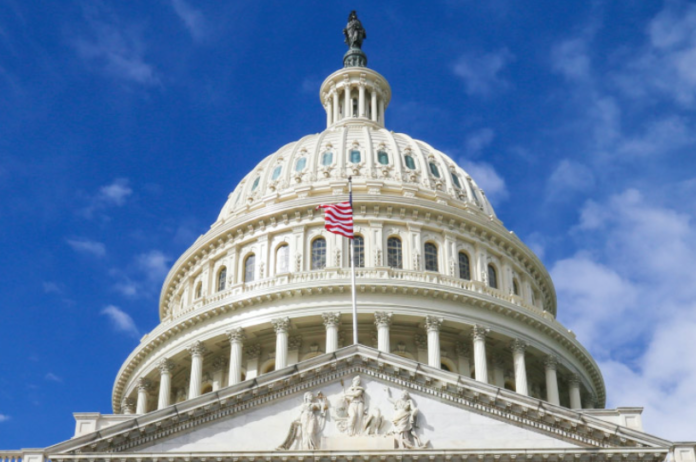President Joe Biden has introduced the American Jobs Plan – a $2 trillion investment that would create millions of good-paying jobs, rebuild the country’s infrastructure and position the U.S. to compete in the evolving global economy.
Public domestic investment as a share of the economy has fallen by more than 40% since the 1960s. The U.S. is considered the wealthiest country in the world, yet it ranks 13th when it comes to the overall quality of its infrastructure. After decades of disinvestment, roads, bridges and water systems are crumbling. The electric grid is vulnerable to catastrophic outages.
Biden’s American Jobs Plan will invest about 1% of GDP per year over eight years to upgrade the nation’s infrastructure, revitalize manufacturing, invest in basic research and science, shore up supply chains and solidify care infrastructure. These are investments that economists agree will provide Americans with good jobs and will pay off for future generations by leaving the country more competitive and communities stronger. In total, the plan will invest about $2 trillion this decade. If passed alongside Biden’s Made in America corporate tax plan, it will be fully paid for within the next 15 years and reduce deficits in the years after.
Biden’s plan aims to unify and mobilize the country to meet the climate crisis. The plan targets 40% of the benefits of climate and clean infrastructure investments to disadvantaged communities. Specifically, Biden’s plan aims to:
- Spur jobs modernizing power generation and delivering clean electricity. Biden is proposing a 10-year extension and phase-down of an expanded direct-pay investment tax credit (ITC) and production tax credit (PTC) for clean energy generation and storage. These credits will be paired with labor standards to ensure the jobs created are good-quality jobs with a free and fair choice to join a union and bargain collectively. The President’s plan will mobilize private investment to modernize the power sector. It also will support state, local and tribal governments choosing to accelerate this modernization through complementary policies – like clean energy block grants that can be used to support clean energy, worker empowerment and environmental justice. To ensure that the nation takes full advantage of the opportunity that modernizing our power sector presents, Biden will establish an Energy Efficiency and Clean Electricity Standard (EECES) aimed at cutting electricity bills and electricity pollution, increasing competition in the market, incentivizing more efficient use of existing infrastructure and continuing to leverage the carbon pollution-free energy provided by existing sources like nuclear and hydropower.
- Establish the U.S. as a leader in climate science, innovation and R&D. The President is calling on Congress to invest $35 billion in the full range of solutions needed to achieve technology breakthroughs that address the climate crisis and position the U.S. as a global leader in clean energy technology and clean energy jobs. This includes launching ARPA-C to develop new methods for reducing emissions and building climate resilience, as well as expanding across-the-board funding for climate research. In addition to a $5 billion increase in funding for other climate-focused research, his plan will invest $15 billion in demonstration projects for climate R&D priorities, including utility-scale energy storage, carbon capture and storage, hydrogen, advanced nuclear, rare earth element separations, floating offshore wind, biofuel/bioproducts, quantum computing and EVs.
The PTC provides a tax credit of $0.01-$0.02 per kWh for the first 10 years of electricity generation for utility-scale wind. The alternative ITC provides a credit for 12%-30% of investment costs at the start of the project and is especially significant for the offshore and distributed wind sectors because such projects are more capital-intensive and benefit from the up-front tax benefits. In December 2020, Congress passed extensions of the PTC and ITC for one year. Additionally, Congress established a 30% ITC for any offshore wind project that begins construction by Dec. 31, 2025, or began construction before Jan. 1, 2017.
Currently, the business that installs, develops and/or finances the project claims the credit. A tax credit is a dollar-for-dollar reduction in the income taxes that a person or company would otherwise pay the federal government. But many developers don’t have sufficient tax liability to take full advantage of the tax credits themselves. In these cases, developers partner with a third-party investor using tax equity financing. Utilizing third-party tax equity can be an expensive process for certain types of commercial solar projects.
Direct cash payments in lieu of the ITC would be a significant incentive that would allow developers to benefit directly from tax credits rather than pay a premium to tax investors. The goal is to enable projects with little or no taxable income to quickly monetize the credits, allowing completion of construction at lower cost and creating jobs, rather than having to carry the excess credit forward to apply to future tax liability.
To access the White House’s fact sheet detailing all the proposed American Jobs Plan’s provisions, click here.




